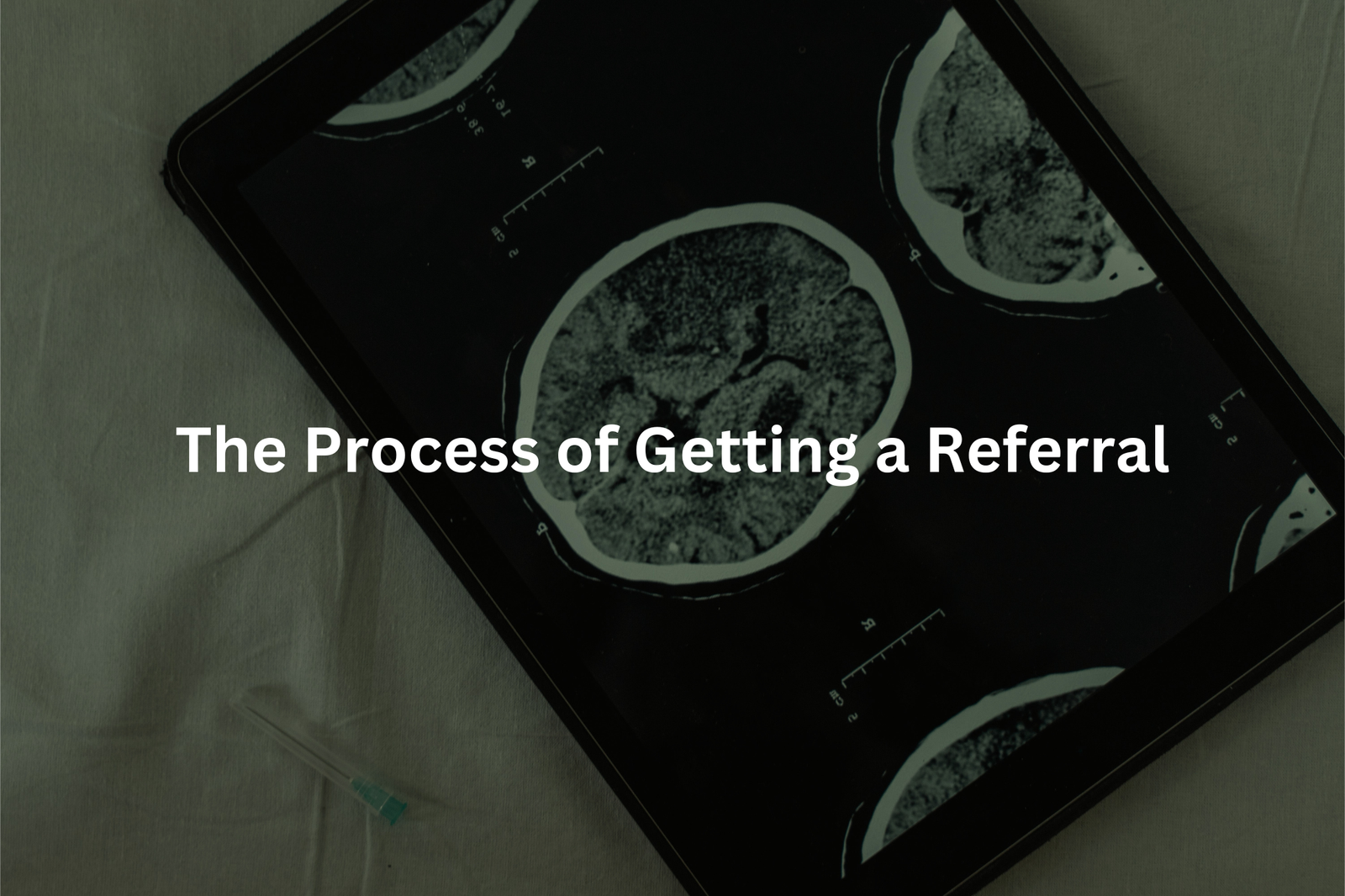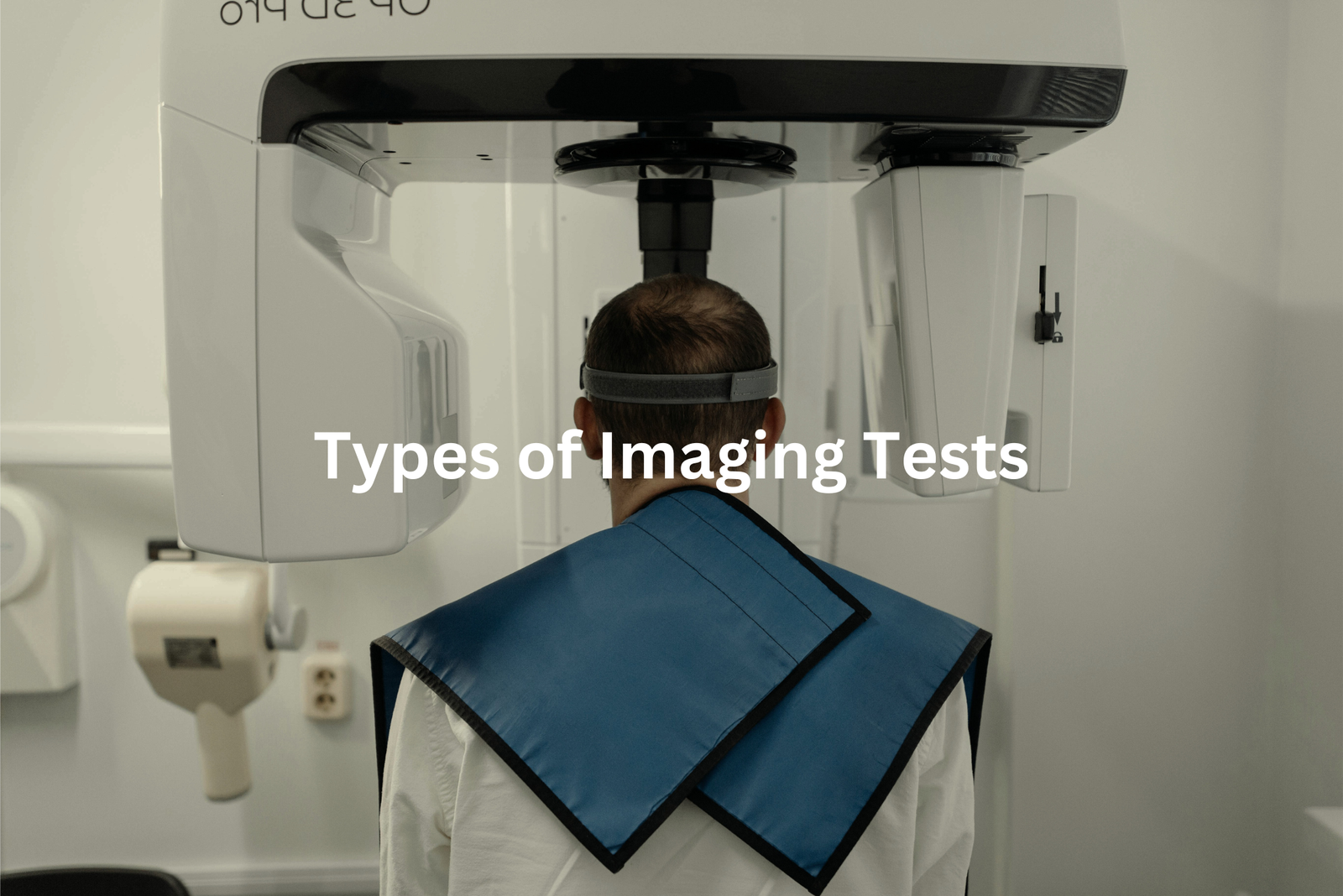Radiologist referrals can make or break your diagnosis. See why they matter for accurate tests, faster treatment, and better care for your health.
When I was a kid, I broke my arm climbing a tree. I had to get an X-ray, and it scared me a bit, but I learned how important imaging tests are for finding what’s wrong. This is also true for radiologist referrals. They help doctors get the right images to see what’s happening inside our bodies.
If you’re a health professional or a patient, understanding how these referrals work is key to getting the best care. Knowing this can lead to quicker diagnoses and better treatment plans. Want to learn more? Keep reading!
Key Takeaway
- Radiology referrals are important for getting imaging tests like X-rays and MRIs.
- A clear referral letter helps radiologists provide accurate diagnoses.
- Knowing the referral process can save time and improve health outcomes.
What Are Radiology Referrals?
Radiology referrals are like a set of instructions from your doctor to a specialist. When you see your GP (general practitioner) and they think you need an imaging test—like an X-ray, MRI, or CT scan—they’ll write a referral. This is a document that tells the radiologist what’s going on with your health and what kind of images they need to take. Without it, the radiologist wouldn’t know what to focus on.
It’s kind of like putting together furniture. You wouldn’t start without the instructions, right? The referral is the guide. It explains what the GP suspects and what the radiologist should look for in the images.
Here’s the process:
- GP’s Decision: Your GP decides an imaging test is needed.
- Referral Letter: They write a letter with details about your health and the test required.
- Radiologist’s Role: The radiologist uses the referral to focus on the right areas in the images.
This system ensures you get the right care. It’s a small but important step that helps doctors work together to figure out what’s best for you.
Why Are Referrals Important?
Referrals are a bigger deal in healthcare than most people think. Around 40% of patients who visit a GP in Australia end up being referred for imaging tests. That’s nearly half! These tests can include X-rays, MRIs, or CT scans, depending on what the doctor thinks is necessary. They’re not just random guesses, either. These tests help diagnose things like broken bones, internal injuries, or other conditions that can’t be seen just by looking.
Medicare, Australia’s healthcare system, spends about $1.3 billion a year on these referrals, including radiology. That’s a lot of money, but it shows how important imaging is for proper care. Doctors use their training and experience to decide when imaging is needed, making sure patients get the right answers. So, if your doctor ever gives you a referral, remember it’s not just another step. It’s a key part of figuring out what’s going on and getting you the right treatment.
The Process of Getting a Referral

Getting a referral isn’t something you really need to worry about—it’s pretty straightforward. There are just a few steps involved, and once it’s done, you’re on your way to getting the test you need. It’s like following a recipe—if you have all the right ingredients, it’s easy to bake the cake.
Visit the GP: The first thing you need to do is go see your GP(1). You’ll talk about what’s been going on with your health, your symptoms, maybe a bit of your medical history (they’re probably going to ask about your family’s health as well). It’s the kind of thing where the GP will gather enough details to figure out if there’s something more serious that needs investigating.
Referral Letter: If your GP thinks you need further testing, they’ll write you a referral letter (like a recipe card). This letter will have the tests you need—like an X-ray or MRI—and your medical details. It’s the key to getting your health sorted.
Book an Appointment: Now that you’ve got the referral, you’re ready to make an appointment at an imaging centre. All you have to do is hand over the letter, book a time, and you’re set.
It’s a quick, simple process that ensures your GP is getting you the right care. It really couldn’t be easier! It’s one of those things you don’t need to think much about, and it just works.
Types of Imaging Tests

TWhen it comes to imaging tests, doctors rely on a few common ones to get a better look inside your body. These tests are like the eyes for your doctor, allowing them to peer beneath the surface and figure out what’s going on. Here are a few that often require a referral:
X-rays: They’re quick. Really quick. X-rays help doctors spot things like fractures or infections. Think of them as a sneak peek inside your body (without a scalpel!). They can see your bones clearly, which is why they’re so helpful when it comes to breaks or things like pneumonia.
MRI (Magnetic Resonance Imaging): MRIs are the ones that show soft tissues really clearly. They’re used when doctors want to get a good look at your brain, muscles, or organs. It’s like looking at the parts that don’t show up on X-rays, like the muscles that help you move. And yes, they’re a bit noisy (a constant tapping sound), but they’re non-invasive.
CT (Computed Tomography) Scans: CT scans are fast. They give doctors cross-sections of your body—think of them like slices through a loaf of bread. These are often used when a doctor needs to get an urgent, detailed look at what’s happening, especially in emergencies. They can pinpoint issues, like internal bleeding, in a matter of minutes.
These tests might seem like high-tech wizardry, but they’re incredibly helpful. If your GP thinks you need one, don’t hesitate. Getting the right test can be the first step to better health.
Validity of Referrals
Once you’ve got that referral in hand, there’s no rush. It’s good for a whole year (12 months, to be exact). That means you don’t need to go back to your GP for a new one if you need another test, which can be a real lifesaver when you’re juggling appointments or dealing with an ongoing issue.
Here’s how it works:
- Referral Length: Your referral lasts 12 months(2). A whole year. You can go in anytime during that period and get the imaging services you need (as long as it’s covered by the referral).
- More than One Appointment: If you need multiple tests, or even just another round of imaging, no new paperwork’s needed. That means you’re not going through the same process over and over, which saves time and stress.
- Flexibility: Imagine you get your first X-ray and need an MRI later on. If it’s within that year, you’re all set—no need to chase up your doctor again. The referral covers it all.
This system really makes things easier. With a year-long referral, you can focus on what matters most: getting the tests and answers you need without hassle. So if you’re planning on getting something like an MRI or CT scan, just know you’re covered for the long haul.
Going Digital with Referrals
The Australian government has made life easier with digital health initiatives, and it’s not just for tech-savvy folks. Doctors and patients can now use electronic referrals. It’s like having a magic button to send a referral straight to the imaging center (no paper or fax required). You can almost hear the sighs of relief.
Here’s how it works:
- Instant Connection: With electronic referrals, doctors don’t need to print out a referral letter or wait for it to be delivered. They can send it directly to the imaging centre with just a few clicks.
- Faster Appointments: Without the usual back-and-forth, appointments can be booked much quicker. Imaging centres receive the referral right away, meaning less waiting around.
- Less Paperwork: Since everything’s done digitally, there’s no paper trail getting lost or misplaced. This is huge, especially when you’re trying to keep track of multiple tests and appointments.
- Patient Convenience: You don’t need to carry a referral around anymore. The doctor handles everything, and you can simply show up at your appointment.
It’s a simple change, but it makes everything run smoother. If you’re due for a test, you might just find that the process is faster and less stressful thanks to digital health. You can focus on your health, not the paperwork.
The Importance of Detailed Referrals
When it comes to medical referrals, details matter—more than most people realise. A vague referral might lead to a vague diagnosis. But a detailed referral? That’s like giving the radiologist a map, complete with directions, showing exactly where to look. Take a knee injury, for example. If the GP suspects a ligament tear, they need to note that in the referral. It makes the radiologist’s job easier. They know to focus on the knee’s ligaments, rather than spending time on areas that might be fine.
Here’s why this matters:
- Clarity: The more specific the referral, the more targeted the imaging test can be. For example, if there’s a concern about a shoulder injury, the GP should mention the exact type of injury they suspect—like a rotator cuff tear.
- Efficiency: A clear referral saves time. The radiologist doesn’t waste time looking at areas that aren’t of concern. They focus right where it’s needed.
- Better Outcomes: When the imaging is precise, the diagnosis is more accurate. And that leads to better treatment. Simple, right?
In my experience, I’ve seen a few cases where vague referrals led to extra tests. It’s frustrating for the patient and can delay things. So, next time you’re headed to the GP, don’t be shy. Ask them to be specific about what they think is wrong. It can make all the difference.
Preparing for Imaging Tests
Before heading in for an imaging test, one thing you should always keep in mind is the instructions you’re given. Sometimes, it’s not just about showing up at the right time or lying still during the scan. The preparation beforehand can really affect how accurate your results are. For instance, some tests, like CT scans, might require you to avoid eating or drinking for a few hours(3). A full stomach can mess with the imaging process. I’ve been there myself, sitting around hungry and second-guessing if I’d followed the rules properly. But those instructions? They’re there for a reason.
You might also be told to pause certain medications before the test. And yeah, I get it—it’s easy to worry about skipping your meds, especially if they’re for something serious like chronic pain. But I’ve seen people ignore this advice, and it led to scans that weren’t clear or even had to be repeated. That’s not fun for anyone, and it delays treatment too.
So, even if it feels like a hassle, take a moment to check what you need to do before your test. Whether it’s fasting, stopping a medication, or wearing loose clothing, these small steps can make a big difference in getting the right diagnosis. Always ask your doctor or technician if you’re unsure—they’re there to help.
The Role of Medicare
Sources: RACGP.
Getting an imaging test, like an X-ray or MRI, might seem straightforward, but there’s one thing you shouldn’t forget—a referral from your GP. Without it, Medicare won’t help cover the cost, and you could end up paying a lot more than you expect. That referral is like your ticket to making sure the bill doesn’t come entirely out of your pocket.
I’ve got a mate who learned this the hard way. He went in for an MRI, thinking it’d be no big deal. But because he didn’t have a referral, Medicare didn’t chip in. The bill? Over $500. That’s a lot of money for something that could’ve cost much less if he’d just checked with his GP first. It was a tough lesson, but it stuck with him—and me too.
So here’s the thing: before you book any imaging test, double-check with your GP. Ask if you need a referral. It’s not just about getting the scan done; it’s about making sure you’re not paying more than you should. A quick chat with your doctor could save you hundreds.
FAQ
What is an Imaging Request and how does it work?
An Imaging Request is the process of asking a radiology provider to perform a diagnostic imaging service, such as an X-ray, CT scan, or MRI. This involves submitting a detailed explanation of the medical condition and the specific imaging test needed. The radiology provider then reviews the request and schedules the appropriate diagnostic imaging examination.
How can Practice software help with Imaging Referrals?
Many medical practices use practice management software that includes features for handling imaging referrals. This can streamline the process by allowing you to electronically submit the Imaging Request, track the status, and access the patient’s diagnostic imaging results directly within the software. The software may also have a built-in “Request button” to initiate the referral.
What are the Referral Guidelines for Diagnostic Imaging?
The Referral Guidelines for Diagnostic Imaging are evidence-based guidelines developed by the Referral Guidelines Working Group. They provide recommendations on the appropriateness of different imaging tests for various medical conditions. Following these guidelines can help ensure the imaging referrals are medically necessary and avoid low-value imaging that may expose patients to unnecessary radiation or costs.
How can Diagnostic Imaging Pathways help with Referrals?
Diagnostic Imaging Pathways are clinical decision support tools that guide healthcare providers on the most appropriate diagnostic imaging tests for a patient’s symptoms or condition. Using these pathways can promote the adoption of evidence-based imaging referral practices and improve the application of imaging referral guidelines within a medical practice.
What should I consider when Referring Patients for Diagnostic Imaging Services?
When referring patients for diagnostic imaging, it’s important to consider factors like the medical necessity of the test, the potential risks and benefits, and whether the imaging service is covered by the patient’s health insurance. Staying up-to-date on the latest diagnostic imaging guidelines and being aware of the services versus referrals offered by different imaging providers can help ensure appropriate and cost-effective care for your patients.
How can I ensure I’m following Best Practices for Diagnostic Imaging Referrals?
To follow best practices for diagnostic imaging referrals, it’s essential to be familiar with the Referral Guidelines for Diagnostic Imaging and the Diagnostic Imaging Pathways. Regularly reviewing and disseminating these guidelines to your medical practice can help promote the adoption of evidence-based imaging referral practices and improve the appropriateness of the imaging tests ordered. Additionally, collaborating with diagnostic imaging providers and staying informed about the latest developments in the field can further enhance the quality and efficiency of your imaging referrals.
What are some common Diagnostic Imaging Procedures I might Refer Patients for?
Some common diagnostic imaging procedures that healthcare providers may refer patients for include X-rays of the cervical spine, lumbar spine, thoracic spine, and other body parts, as well as ultrasound examinations to assess subcutaneous structures. These imaging tests can help diagnose a wide range of medical conditions and guide treatment decisions.
How can I ensure my Patients have a Positive Experience with Diagnostic Imaging Referrals?
To ensure a positive patient experience with diagnostic imaging referrals, it’s important to provide them with clear and detailed explanations of the recommended imaging tests, including the purpose, potential risks, and what to expect during the procedure. Encouraging patients to actively participate in their care by reviewing the referral guidelines and asking questions can also help build trust and improve their overall satisfaction with the diagnostic imaging process.
Conclusion
Getting a radiology referral is really important for patients and doctors. It makes sure that everyone gets the right type of imaging for their health. If you know how to go through the referral process, it can save time and help you feel better sooner. So, if you or someone you care about needs a radiology referral, keep these tips in mind. They can make the whole experience easier and even help improve your health.
References
- https://www.dcceew.gov.au/environment/epbc/advice/referral-applications-and-proposals
- https://www.servicesaustralia.gov.au/referrals-for-specialist-treatment?context=20
- https://imagingassociates.net.au/for-patients/preparation




